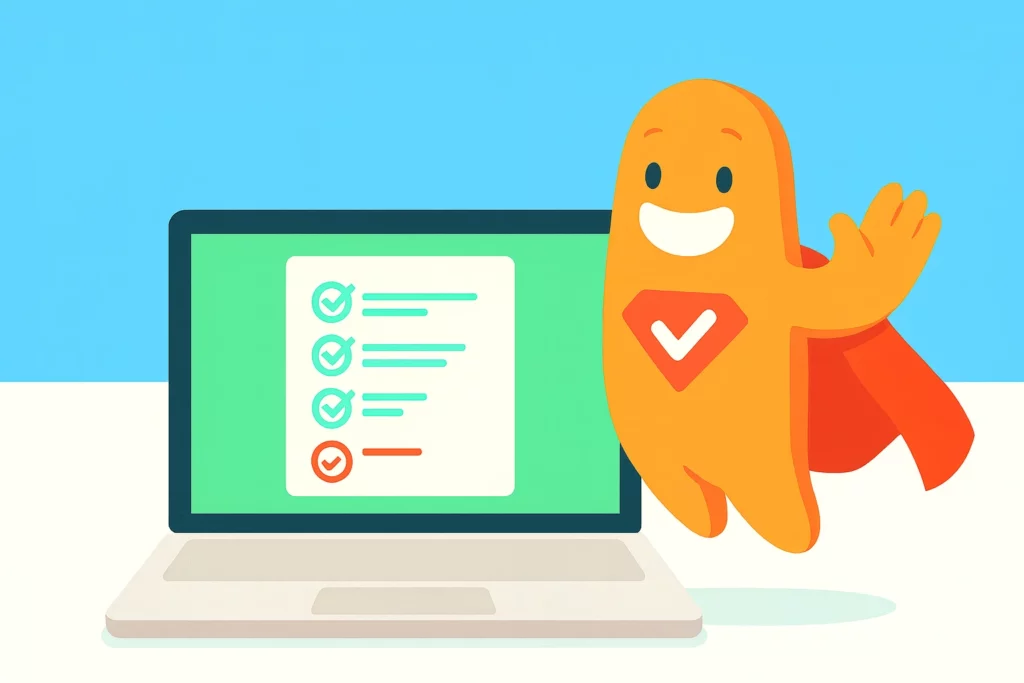They say it is much cheaper to retain a customer than it is to acquire a new one. But is this an arbitrary statement? And who exactly are they? We have that answer – and a lot more to share when it comes to customer retention and the power of surveys. So let’s take a look at customer retention, what it means, how to improve it, and how using surveys as part of your strategy can help keep customers coming back.
Create Your FREE Customer Retention Survey Now!
Customer Retention vs Customer Attrition
Customer retention is a business strategy that emphasizes the importance of nurturing existing relationships to grow brand loyalty and repeat business. It typically involves a series of marketing initiatives designed to ensure customers continue to choose and remain committed to a brand over time. Through personalized communication, excellent service, and continuous engagement, companies using this strategy work to retain their customer base and increase the lifetime value of a customer.
The opposite of this is customer attrition, or customer churn. This is the loss of customers or clients over a specific period. It quantifies the rate at which customers discontinue their relationship with a company, typically measured as a percentage of the total customer base. Customer attrition happens for a variety of reasons, such as overall dissatisfaction, competitive offerings, changes in personal circumstances such as financial means, and so on. When focusing on customer retention, it’s important to also monitor and manage customer attrition.
Importance of Customer Retention
Customer retention statistics highlight how important keeping customers can be for any company. For example, the Harvard Business Review reveals that acquiring a new customer is anywhere from five to 25 times more expensive than retaining an existing one, because you don’t have to spend time and resources going out and finding them – you just have to keep the ones you have happy. Additionally, research done by Frederick Reichheld of Bain & Company (the inventor of the Net Promoter Score or NPS) shows increasing customer retention rates by 5% increases profits by 25% to 95%.
These statistics underscore the economic significance of customer retention, highlighting its potential to drive sustained business growth and profitability. By focusing on retaining existing customers, companies can enhance their bottom line while building a loyal customer base that serves as a foundation for long-term success. Not only that, but these efforts can turn existing customers into “brand advocates” – people who actively promote a company’s products or services to others via word of mouth, social media, etc.
7 Ways Surveys Can Be Used To Increase Customer Retention
Using surveys can be a powerful tool for increasing customer retention. A survey provides direct feedback from customers, which helps businesses understand their needs, preferences, and pain points. By analyzing their survey responses, companies can identify areas for improvement and take proactive steps to address them. If successful, this ultimately enhances the overall customer satisfaction and brand loyalty. Here are a few things companies can do to increase customer retention with surveys.
2. Gather Data
Craft clear and unambiguous survey questions that are easy for customers to understand and answer in order to collect uncompromised data. Use a mix of different types of survey questions to gather both quantitative data and qualitative feedback.
2. Measure Customer Satisfaction
Conducting regular customer satisfaction surveys to gauge how customers feel about their experiences with your products or services helps identify areas for improvement and prioritize efforts to enhance the overall customer experience or CX.
3. Identify Churn Risk
You can use surveys to identify customers who may be at risk of churning, i.e. ending their relationship with your company or brand. Your surveys should ask specific questions about customers’ likelihood to continue using your product or service, as well as their reasons for potential dissatisfaction. This information can help you intervene and address issues before they lead to customer loss.
4. Get Personal
Customer surveys offer a good way in which to address people in a personal manner. Use customer data to personalize survey questions based on their purchase history, preferences, or past interactions with your company to ensure relevance and maximize response rates. Personalized surveys demonstrate that your company values the customer’s input, which cultivates a sense of engagement and loyalty.
5. Provide Incentives
You might consider offering incentives to encourage survey participation, such as discounts, loyalty points, or entry into a prize draw. This is also a great way to reward loyal customers, to convert those on the fence, or to make good with those who were unhappy (they may still not become a customer, but this could stop them from posting negative reviews of your company). It’s important to remember, however, that incentives come with some caveats. Read our blog on the pros and cons of survey incentives.
6. Close The Feedback Loop
After collecting survey responses, take action based on the feedback received and communicate any changes or improvements made as a result. This demonstrates to customers that their feedback is valued and reinforces their commitment to the brand. No response, or no change, can make customers feel their time was wasted or their opinion ignored.
7. Analyze Data
When the survey is complete, it’s time to analyze survey data systematically to identify trends, patterns, and areas for improvement. Look for common themes or issues raised by customers and prioritize action items accordingly.
By considering these factors when designing surveys for customer retention, businesses can gather valuable insights that inform retention strategies and ultimately strengthen customer relationships over time.
Create Your FREE Customer Retention Survey Now!
Can Surveys Hurt Customer Retention?
It’s important to understand that while surveys themselves are not inherently harmful to customer retention, there are scenarios where poorly executed surveys or mishandled feedback can have negative consequences. Here are some pitfalls to avoid.
- Survey Fatigue. Overwhelming customers with frequent or lengthy surveys can lead to survey fatigue. If customers feel bombarded with survey requests, they may become frustrated and disengaged, potentially leading to a negative perception of the brand and decreased retention. Don’t send surveys too often, and consider using microsurveys from time-to-time which don’t require much effort from participants but still can provide useful data to you.
- Insensitive Timing. Sending surveys at inappropriate times, such as during times of crisis or immediately after a negative customer experience, can be perceived as insensitive and exacerbate customer dissatisfaction. Timing surveys poorly can damage the customer relationship and increase the likelihood of churn. Also, be sure you understand how to ask sensitive questions if you decide to proceed during these times.
- Irrelevant Questions. Asking irrelevant or poorly worded questions can frustrate customers and diminish the perceived value of the survey. If customers feel that their time is being wasted with irrelevant questions, they may be less inclined to provide feedback in the future or even disengage from the brand altogether.
- Ignoring Feedback. Failing to acknowledge or act on customer feedback can undermine trust and loyalty. If customers take the time to provide feedback through surveys but see no visible changes or improvements, they may feel unheard and undervalued, leading to decreased retention.
- Data Privacy Concerns. Mishandling customer data or failing to address privacy concerns can erode trust and damage the customer relationship. If customers perceive that their data is being misused or inadequately protected through surveys, they may lose confidence in the brand and choose to take their business elsewhere. Be sure when surveying to use a survey company that makes security a priority through encryption and other means.
To avoid harming customer retention with surveys, businesses should prioritize transparency, respect customer preferences, and demonstrate responsiveness to feedback.
Customer Retention Survey Questions
Thinking of creating a customer retention survey? Here are a handful of questions to get you started. We’ll highlight a few of them in our example next!
- On a scale of 1 to 10, how satisfied are you with our product/service?
- What initially attracted you to our product/service?
- How likely are you to continue using our product/service in the future?
- What features or aspects of our product/service do you find most valuable?
- Have you encountered any challenges or issues while using our product/service? If so, please describe.
- How responsive do you find our customer support team when you need assistance?
- How likely are you to recommend our product/service to others?
- What improvements or additions would you like to see in our product/service?
- How frequently do you use our product/service?
- Is there anything else you’d like to share about your experience with our product/service?
These questions can help you gauge customer satisfaction, identify areas for improvement, and understand what keeps customers coming back. Adjust them according to your specific business and goals.
Customer Retention Survey Example
Below is a look at an eye-catching customer retention survey created using SurveyLegend. It only asks three questions for brevity in this post, but you may ask as many as you like and use as many types of questions (pictured here are an NPS question, image-based question, and an emotion question (thumbs up/down).

Conclusion
Effective use of customer retention surveys help businesses prioritize customer-centric initiatives, address issues proactively, and continually refine their approach to meet evolving customer expectations. Ultimately, keeping customers (especially when compared to finding new ones) boosts the bottom line!
So, are you ready to get started? SurveyLegend is your free online survey tool and we take retention seriously – after all, we work every day to support our customers to keep them coming back too! We make creating a free survey easy, and also provide dozens of survey templates if you’re so inclined. Various question types are available, including photo images! Get started today.
Create Your FREE Customer Retention Survey Now!
FAQs (Frequently Asked Questions)
Customer retention is the ability of a company to keep customers over a certain period of time. Customer attrition is the rate at which a company loses customers over a certain period of time.
Retaining customers can be challenging due to evolving market dynamics, increased competition, and changing customer preferences. Businesses must continuously adapt their strategies to stay relevant and meet the evolving needs and expectations of their customers.
Customers may leave a brand or company for various reasons, including dissatisfaction with product or service quality, poor customer service experiences, lack of personalized attention, pricing issues, or better offerings from competitors. Additionally, changes in personal circumstances, shifting priorities, or negative word-of-mouth experiences can also influence customer decisions to discontinue their relationship with a brand.
Yes! By gathering feedback directly from customers through surveys, businesses can enhance customer satisfaction, foster loyalty, and ultimately increase customer retention.



